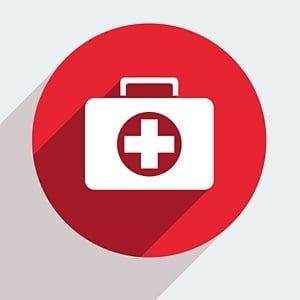
1. The Medical Schemes Act of 1998 regulates the operation of medical schemes in South Africa, and the Council for Medical Schemes is the industry’s regulatory body.
2. In the year 2000 there were 144 registered medical schemes and at the end of 2014 there were 83 – a decrease of 42%. This includes both restricted and open schemes. During these 15 years the number of open schemes decreased by 51% and the number of restricted or closed schemes by 38%.
3. While there are fewer registered schemes, there were 1.4 million more principal members and 2.2 million more beneficiaries in 2014 compared to the year 2000. It is thought that financial pressure contributed to the fact that principal members added fewer beneficiaries during 2014.
Read: SA medical service providers are overcharging
4. In total by the end of 2014 there were 3.9 million principal members of medical schemes in SA and 8.8 million beneficiaries in SA. Of these 58.5% were members of open schemes.
5. The Council for Medical Schemes (CMS) requires a scheme to have 6000 members in order to be registered. The larger a scheme, the smaller is the financial impact of one or two high-claiming members.
6. Discovery Health Medical Scheme is the country’s largest open scheme with 31% of scheme principal members in 2014 (up from 16% in 2001.
7. The Government Employees’ Medical Scheme (GEMS) had a total market share of 18% by the end of 2014.
8. The average age of beneficiaries on all schemes increased from 31 to 32 since 2005. On restricted schemes the average has gone down from 32 to 30 and on open schemes the age has increased from 31 to 33.
9. On average open schemes have a pensioner ratio of 8.5% and closed schemes of just under 6%. Transmed, a restricted scheme, has a pensioner ratio of just under 50%.
10. The average family size on all schemes in 2014 was 2.25.
11. Over the last 15 years, consumer price inflation has been 5.8% on average, while medical scheme contribution inflation has been 7.6% per year, and health expenses inflation 7.8% per year.
12. In 2014 non-healthcare expenditure, such as administration costs was 13% for open schemes and 8.1% for restricted schemes. Sixty-six percent of non-healthcare expenditure went towards administration, 22& towards managed care, 11% to broker and marketing fees, and 1% to bad debts.
13. In 2014 just over a third of open medical schemes achieved an operating surplus. Deficits often mean higher contributions and fewer benefits to members, unless the schemes can use investment income to offset the losses.
14. A scheme has to hold surplus accumulated funds of 25% in order to ensure its financial stability. The average solvency for all schemes in 2014 remained at 33.3%.
Read more:
20 claims medical schemes don’t have to pay for
Don't let medical aid schemes bamboozle you
What to look out for when choosing a medical scheme
Sources: Alexander Forbes Health Diagnosis, 2015/2016: the Council for Medical Schemes




 Publications
Publications
 Partners
Partners














